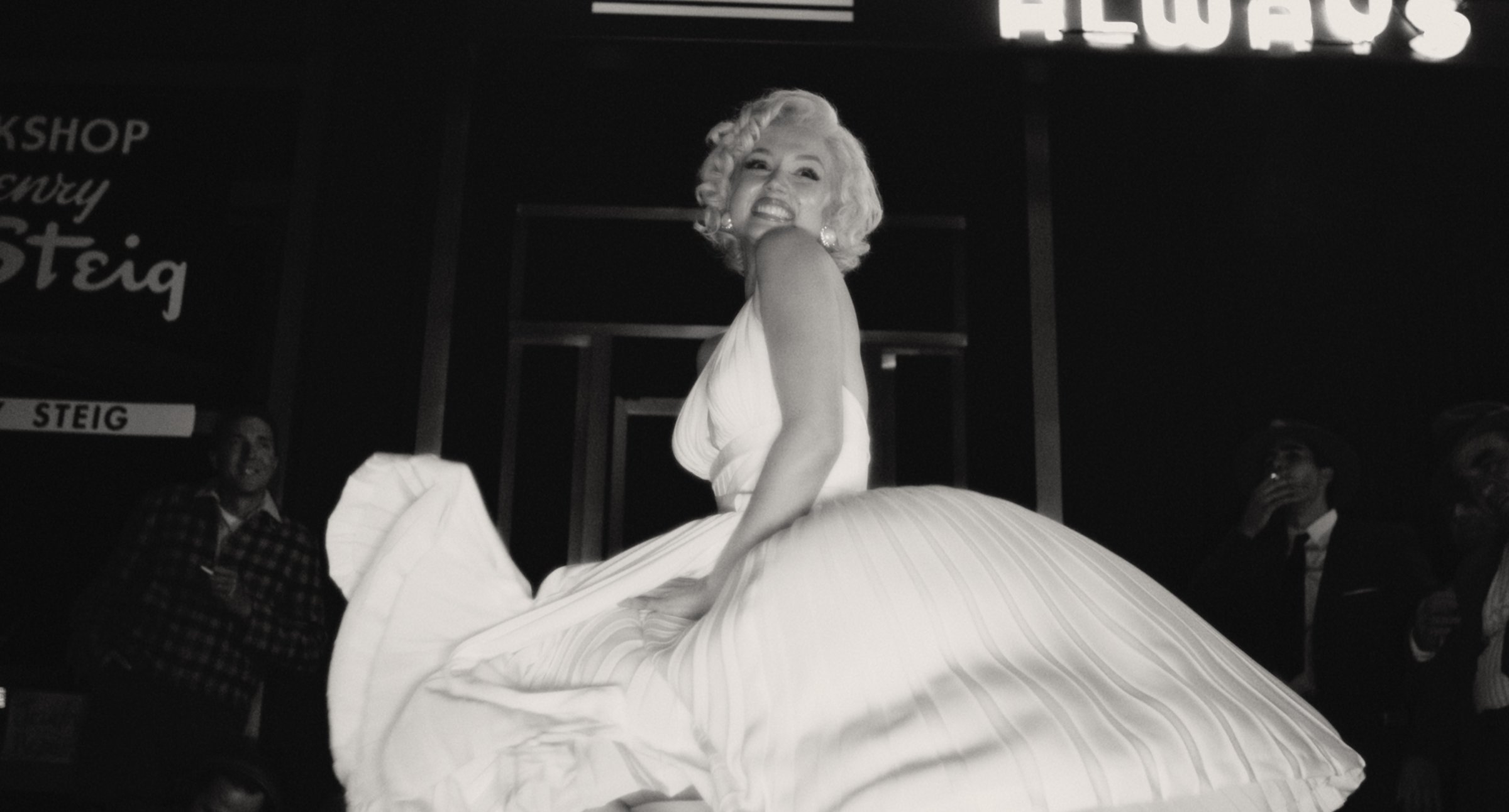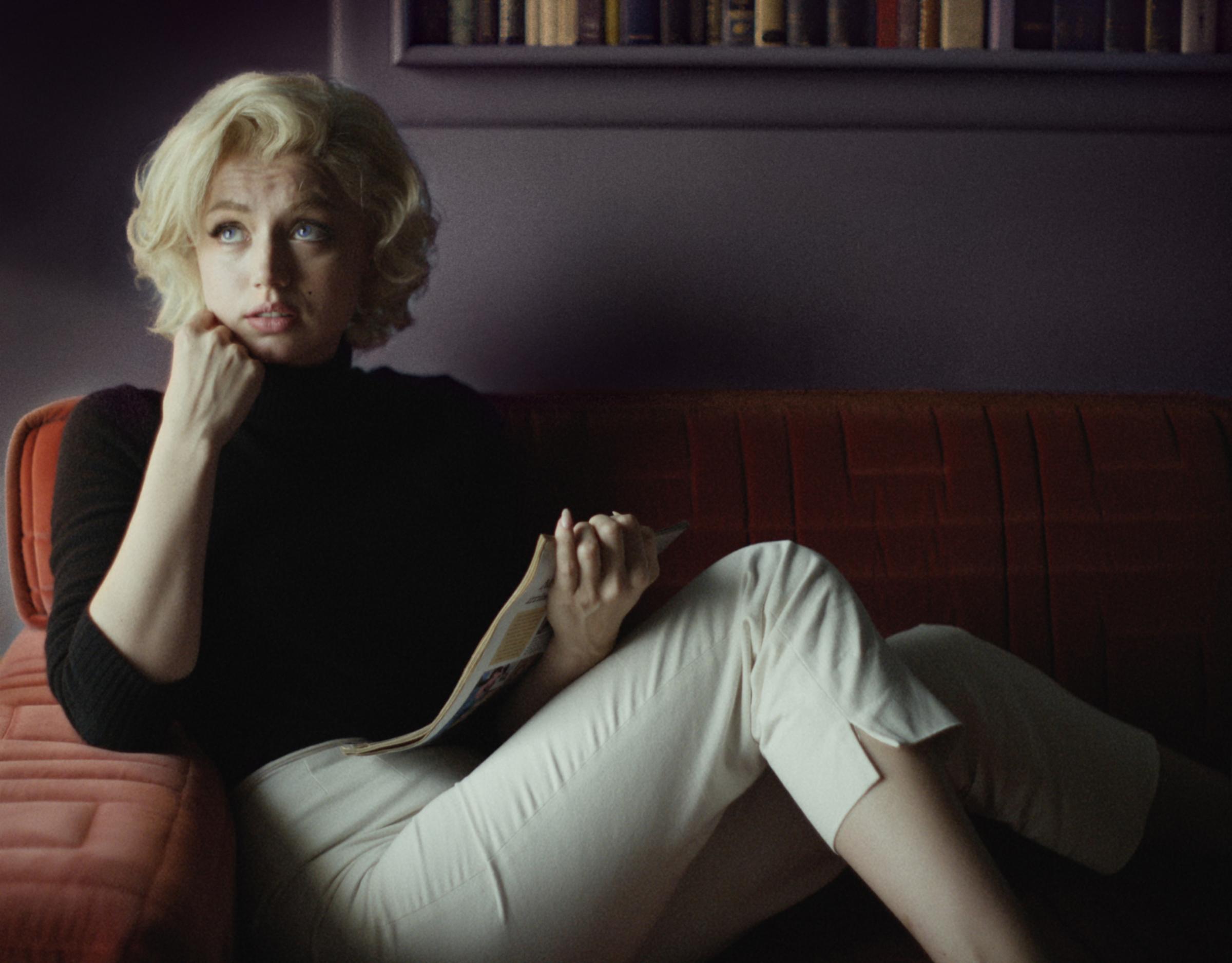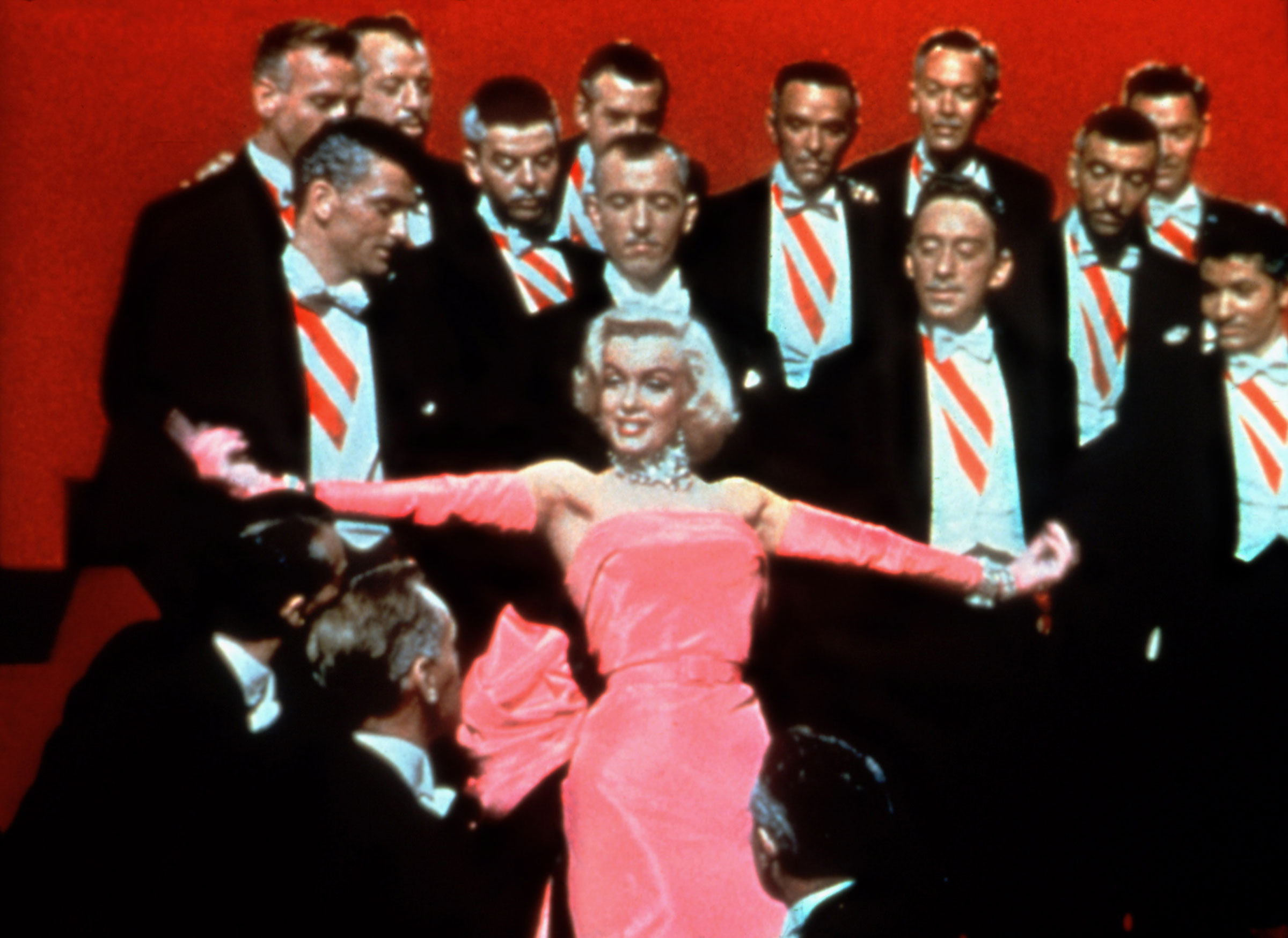
From her platinum hair to her iconic pleated white halter dress, there may be no other figure in pop culture history whose sense of style is so synonymous with her person as Marilyn Monroe. The blonde bombshell was known for her sultry but soft signature style, which toed the line between sex symbol and demure femininity with figure-hugging silhouettes, dramatic red carpet dresses, and minimalist off-duty uniforms. It’s revisited to great effect in Andrew Dominik’s Blonde, an experimental re-imagining of the actor’s glittering but tragic life that releases on Netflix on Sept. 28. In the film, Ana de Armas plays Monroe and wears exquisite recreations of many of her most legendary looks.
While Monroe’s time in the public eye was relatively brief, spanning just under two decades, her impact on fashion is still influential and felt. When someone sports a beauty mark with red lips, Monroe instantly springs to mind. From Madonna’s Monroe cosplay during her “Blonde Ambition” era to the proliferation of Monroe impersonators, her look is not only often imitated, but easily identified. Most recently, Kim Kardashian’s decision to wear the famous bedazzled nude dress that the actor wore to sing “Happy Birthday” to President John F. Kennedy in 1962 to the 2022 Met Gala was another reminder of the collective ongoing obsession with Monroe.
Read more: Here’s How Much of Blonde Stays True to Marilyn Monroe’s Life
“What’s the most American thing you can think of? And that’s Marilyn Monroe,” Kardashian told Vogue in an interview about the dress. “For me, the most Marilyn Monroe moment is when she sang ‘Happy Birthday,’ to JFK, it was that look.”
However, to fully understand why Monroe still holds such a powerful sway on the fashion sphere, nearly 60 years after her death at the age of 36, fashion historian and author of Classic Hollywood Style Caroline Young points to a few crucial factors to consider. Young notes that Monroe put forth a carefully crafted on-screen persona that was sexy, glamorous, and glitzy. This is the side of Monroe that was most heavily documented and that’s what we most associate with her style, even though it did not necessarily reflect Monroe’s actual wardrobe. While in her downtime, Monroe preferred slacks and turtlenecks or simple sheath dresses, it’s the images of her in striking outfits on red carpets or in classic on-screen moments—like when her white dress billowed out as she stood over a subway grate for the filming of The Seven Year Itch—that are much more widespread.


Young says Monroe’s untimely death has meant the pictures that remain of her have become memorialized. “Her image has been entwined these on-screen moments where she’s wearing amazing costumes that stand out,” Young tells TIME. “Because of those moments, her image has been ingrained in culture. You sort of have to wonder, if she lived into old age, whether those images would still be so iconic.”
Read more: We Should Talk More About What a Brilliant Actor Marilyn Monroe Was
In Blonde, the costumes help to delineate the glamorous and glitzy moments of Marilyn’s public persona from the vulnerable and intimate moments of Norma Jeane, or who Monroe was in her downtime. Costume designer Jennifer Johnson painstakingly recreated many of Monroe’s most iconic fashion moments on-screen for the film, including her famous pleated white halter dress from the subway grate scene in The Seven Year Itch and the legendary hot pink strapless column gown and matching opera gloves she donned to sing “Diamonds Are a Girl’s Best Friend” in Gentlemen Prefer Blondes.
The film’s more interesting come when Marilyn is dressed casually, usually in a pair of high-waisted gingham slacks and a black turtleneck like when she’s visiting her mother in a mental institution or in the simple black sheath dress she wears while attending the Actors Studio in New York. These looks, a far cry from the hyper-sexy costumes on Hollywood sets and red carpets, are the uniform for the Monroe’s quiet interiority and a reminder that despite the fact that she one of the most visible women in her industry, what audiences saw wasn’t the full picture.
Monroe also owes a significant amount of her influence on fashion to her close relationships with costume designers, says fashion historian and assistant curator of fashion for the Cleveland Museum of Art, Darnell-Jamal Lisby. He points to people like William Travilla, who was responsible for some of Monroe’s most famous looks on- and off-screen, including the white halter dress from The Seven Year Itch, the hot pink gown she wore in Gentlemen Prefer Blondes, and the gold lamé gown she had to be sewn into to wear to a movie premiere (this outfit landed Monroe on the front page of newspapers the next day).
“The costume designer and an actress or starlet have a very intimate relationship,” Lisby tells TIME. “The one [between Monroe and Travilla] is a great example to show how that relationship resulted in a fashion marriage that helped create how we see Marilyn Monroe today.”

The power of presentation wasn’t lost on Monroe either, Lisby says. For example, Monroe effectively used how she presented herself to the world as not only a way to boost her career, but to manage the press, creating headlines on her terms. When she wore the figure-hugging, crystal-embellished nude dress from Jean-Louis and designed by a young Bob Mackie, she was aware it would draw lots of attention and result in salacious news coverage.
With this ability—to use clothes to create buzzed-about moments—Monroe paved the way for influencers and public figures like Kardashian to use presentation to create headlines, according to Young. The glitzy costumes we have come to associate most with Monroe, along with her beauty and distinct look, has made her an easy person to copy, with many a blonde bombshell, running the gamut from Gwen Stefani to Billie Eilish, emulating her look over the years.
Read more: Kim Kardashian Revisits American History By Wearing Marilyn Monroe’s Iconic Dress to the Met Gala
“She led the way for creating moments to get splashed on the front pages,” Young says. “She was probably one of the first to use dress as a tool for that kind of attention and to be quite clever about it. She was just a lot smarter than people thought and she knew exactly what she was doing in those moments.”
According to Lisby, Monroe’s enduring influence lies not just in how Monroe styled her image during her lifetime, but in how her legacy continues to inspire fashion creatives today.
“She definitely holds a very specific place as an American fashion figure and rightfully so,” says Lisby. “While there are so many other fashion figures that have existed, looking at Marilyn Monroe, what she was able to emanate and be a muse for many costume and fashion designers is incredible and in the years that she was able to do it.”
More Must-Reads from TIME
- Cybersecurity Experts Are Sounding the Alarm on DOGE
- Meet the 2025 Women of the Year
- The Harsh Truth About Disability Inclusion
- Why Do More Young Adults Have Cancer?
- Colman Domingo Leads With Radical Love
- How to Get Better at Doing Things Alone
- Michelle Zauner Stares Down the Darkness
Write to Cady Lang at cady.lang@timemagazine.com